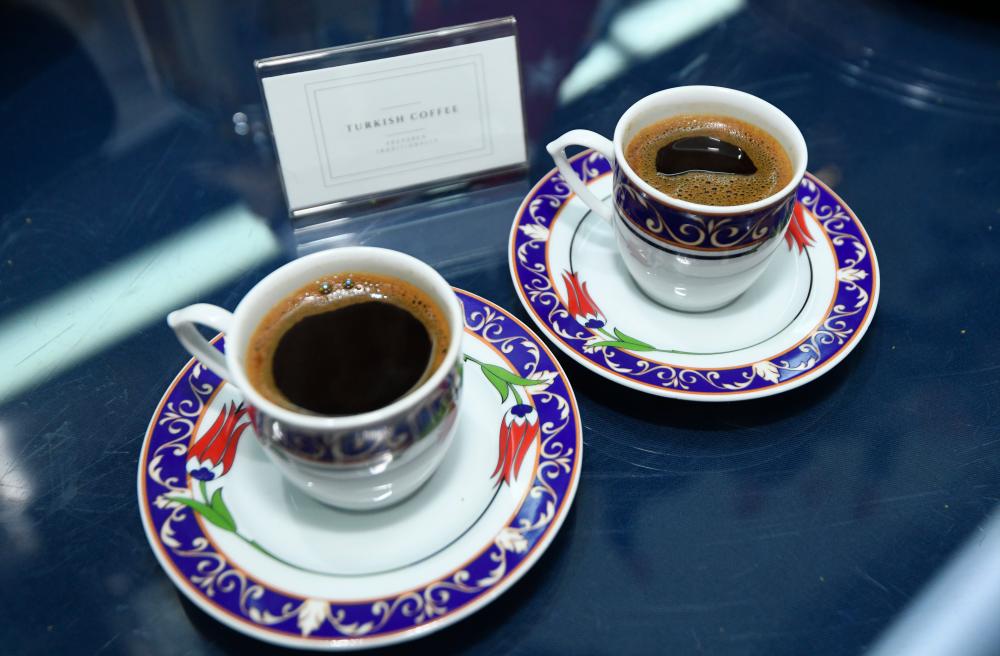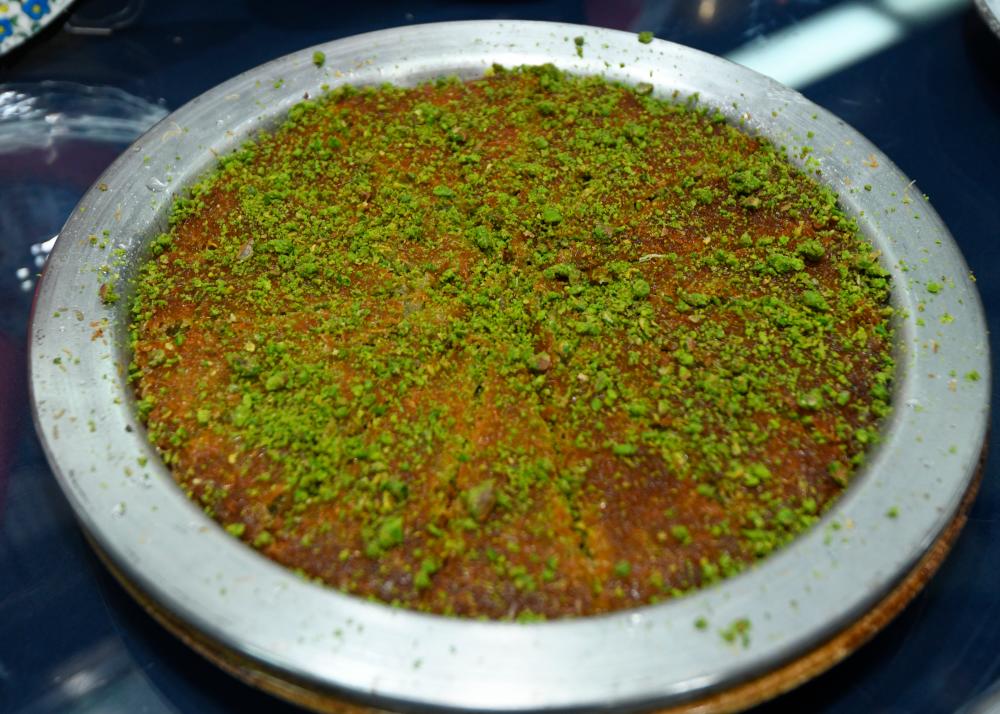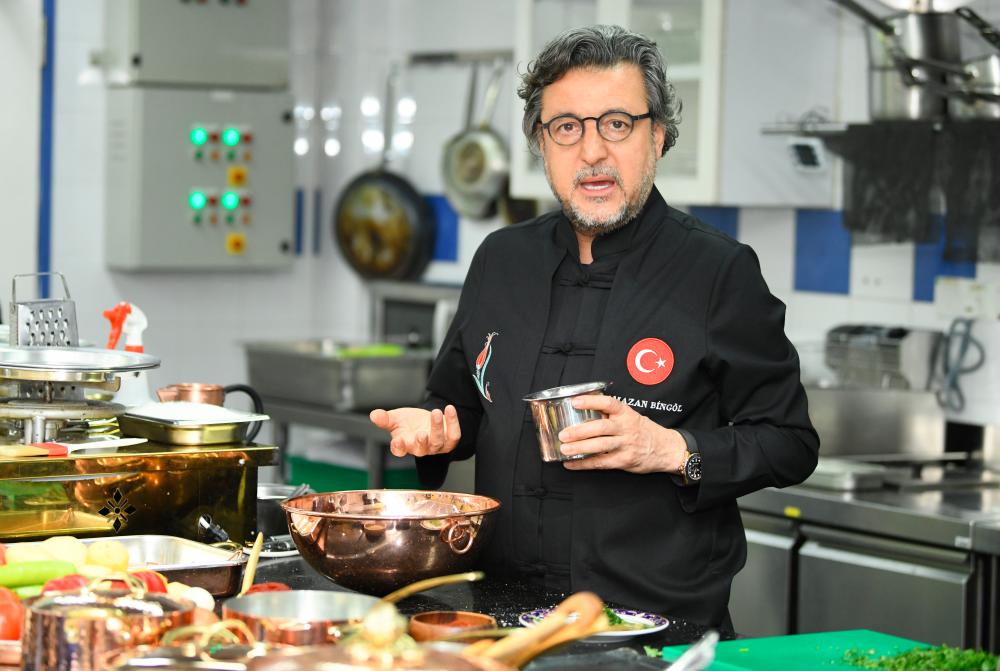THINK Turkish cuisine and chances are the heavily spiced kebabs is the first thing that comes to mind. But it is so much more than that as food from this part-Mediterranean, part-Asia nation is as multi-layered and exotic as its geographical location.
Every year, a specific region is selected, and the traditional cuisine, made with locally harvested ingredients and prepared with unique techniques, are celebrated by the Turkish embassies around the world.
This year, the Turkish Cuisine Week was dedicated to the Aegean region, one of seven regions in Turkiye, with Izmer being the largest city in a cluster that includes Manisa, Aydin, Denizli, Muğla, Afyonkarahisar and Kütahya.
The Embassy of the Republic of Türkiye, in collaboration with Le Cordon Bleu, held a cooking demonstration recently to promote and celebrate Turkish culinary heritage and to appreciate Turkish cuisine and culture.

“Turkish cuisine is one of the richest in the world, and we want to promote and share it with the world. Every year, we decide on a different theme. This year, we emphasise sustainability and zero waste,” said Ambassador of Türkiye Emir Salim Yükse during the event.
He explained that Mediterranean cuisine places special emphasis on dishes that use olive oil.
“These cuisines (Izmer Kofte and Tel Kadaif) come from a region where olive oil is accepted as almost sacred and heavenly blessed,” said the diplomat.
Expert hands
The man entrusted with evoking the collected senses of the attendees was renowned Turkiye chef Ramazan Bingöl, whose cooking demonstration placed great emphasis on creating healthy, no-waste, and sustainable cuisine.
The 57-year-old chef is also a published author, with two books to his name – Restaurant Management: How to Manage a Restaurant? and The Relationship Between the Employer and the Worker in Restaurant Management.
The restaurant business consultant is also a member of the Istanbul Esenler Provincial Council, and a member of the Assembly of Commerce Chamber and Union of Chambers and Commodity Exchanges of Turkey.
The first dish Bingöl presented was the Izmir Köfte – meatballs in tomato sauce.
The chef made the dish with lamb, instead of the original beef, as a mark of respect for some Malaysians who do not consume beef. He used original ingredients from the region, such as olive oil, picked and produced through ancient methods from the Aegean region.
The minced meat was mixed with parsley, salt and spice and turned into oval-shaped patties, flattened with a palm to give it a unique texture.
While the meatballs were fried and baked in the oven, potato wedges and banana peppers were prepared separately, but all of the ingredients came together in a tray with reduced tomato sauce poured onto the dish.
The exotic dish was packed with hearty flavour and the tender meat was a perfect balance of spice and herbs.

Royal extravagance
Bingol then presented Tel Kadaif, a baked dessert with pistachios, which was once the traditional dessert reserved for royalty.
A layer of Kadaif, or finely shredded noodles (or like filo), is placed on a baking sheet on a tray, and then a layer of finely grounded pistachio is added on, before another layer of Kadaif is compressed on top.
Butter is drizzled and the dessert place it on a special cooking utensil that spins while cooking. The handmade syrup, with sugar, water, and lemon juice, was poured lavishly on the dessert with sprinkles of pistachios on top.
A slice of the crispy dessert is will immediately transport the diner to Turkiye with its explosion of flavours.
Aromatic Turkish coffee, prepared traditionally by the chef using grounded Turkish coffee bean powder using special utensils like cezve and their ancient method was served to the guests. The coffee was just the perfect end to the flavourful savoury cuisine and sweet dessert.
Recipes
Bingol shared the recipes of Izmer Kofte and Tel Kadaif so that readers can bring a taste of the Aegean district onto the dining table.
Izmir köfte
Ingredients (serves 6)
750g mince mutton, medium lean and minced twice
120g stale bread without crusts, soaked in water
2 medium onions, finely grated
5 sprigs parsley, finely chopped
1 and 1/2 teaspoons salt
1/2 teaspoons of black pepper
3 large potatoes
1 tablespoon clairfied butter
2 medium tomatoes, finely chopped
200ml hot water
5–6 banana peppers, de-seeded and cut into 4 pieces
1 medium tomato, cut into wedges
200ml olive oil for frying
Instructions
1. Place the minced meat inside the bowl and add bread after squeezing out excess water and add onions.
2. Add parsley, salt and spices and knead well.
3. Divide the meatball mixture into pieces about the size of a small egg. Moisten the palm.
4. Cut potatoes into wedges – the same size as the meatballs.
5. Fry the kofte using oil and arrange it in between potatoes.
6. Sauté finely chopped tomatoes in butter for 1–2 minutes in a separate saucepan.
7. Add 200ml water and bring to the boil.
8. Place the banana peppers and tomato wedges upright between the kofte and potatoes.
9. Pour the tomato sauce over the kofte.
10. Place in oven pre-heated to 200 Celsius, bake for 20–25 minutes until tomatoes and banana peppers change colour.

Tel Kadaif
Ingredients (serves 6)
500g Kadai noodles
250g butter
50g Antep pistachios
100g grounded Antep pistachios
For the sugar syrup
500ml water
375g sugar
1 teaspoon lemon juice
Instructions
1. To make the syrup, bring the water and sugar to the boil and simmer for 15 minutes.
2. Add the lemon juice and remove from the heat after 2–3 minutes. Leave to cool.
3. Loosen the kadaif noodles gently by pulling it apart strands by hands and arrange the kadaif noodles.
4. Melt butter and set aside.
5. Grease the baking pan with butter and sprinkle kadaif little by little by making sure it is incorporated in the butter. Then, compressed with another baking tray.
6. Sprinkle the finely ground pistachios all over to cover the shredded kadaif.
7. Add the remaining shredded kadaif and compress all the ingredients. Drizzle the remaining melted butter all over.
8. Place the baking tray in a preheated 200 Celsius oven and bake the top until it turns golden brown.
9. Turn the dessert over, put it back in the oven and bake for 10 minutes until it turns golden brown on the other side.
10. Remove from the oven and leave for 3–4 minutes. Then, slowly drizzle the cooled syrup over the hot kadaif and leave to soak.
11. When the syrup is absorbed, cut into slices.









